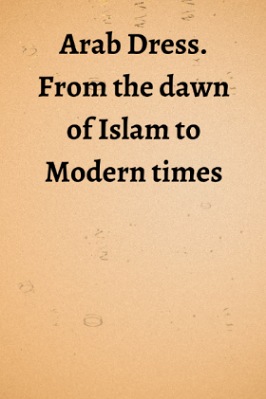
| Book Title | Arab Dress From The Dawn Of Islam To Modern Times |
| Book Author | |
| Total Pages | 355 |
| Book Views | |
| Language | English |
| Book Download | PDF Direct Download Link |
| Get Hardcover | Click for Hard Similar Copy from Amazon |
Arab Dress From the dawn of Islam to Modern times.
Yedida Kalfon Stillman
Arab Dress From the dawn of Islam to Modern times.
Clothing constitutes a cultural statement. It is a manifestation of culture, no less than art, architecture, literature, and music.
Like all cultural phenomena, it communicates a great deal of information both on the physical and symbolic level about the society in which it
is found.
Fashions, or modes of dress, reflect not only the aesthetics of a particular society (what might be called the “adornment factor”), but also its social mores and values (the “modesty/immodesty factor,” or “reveal/conceal factor”).
Furthermore, dress is often a clear economic indicator.
The fabric, quality of cut, and ornamentation of
a garment are commonly badges of socioeconomic status.
More subtly and often symbolically, clothing reflects religious and political norms.
In Islamic society, clothing has historically been intimately connected with notions of purity and impurity (, tahara and najas ), ritual
behavior ( sunna ), and the differentiation of the believer from the unbeliever {ghiyar ), as well as the separation of the genders {hijdb).
Thus, within Islamic society clothing constitutes a cultural complex, or what Roland Barthes has dubbed a “vestimentary system .”
The study of clothing belongs to the larger field of socio-historical studies subsumed under the rubric of “material culture” ( materielle
Kultur or Sachkultur in German and culture materielle in French, the two languages in which much of the leading work in this field has been done ).
Although the field of material culture is well developed for Classical Antiquity and for the European Middle Ages, the Renaissance, and modern times, it is less so for the Islamic world (including the Arab lands), particularly for the premodern period.
Even the ethnographic studies of contemporary Middle Eastern and North African traditional dress are meager, with the most extensive work having been done on the Maghreb during the colonial period, and these latter studies are often primarily descriptive rather than analyt-
To read more about the Arab Dress From The Dawn Of Islam To Modern Times book Click the download button below to get it for free
Report broken link
Support this Website
 Don't Miss out any Book Click Join OpenMaktaba Telegram group
Don't Miss out any Book Click Join OpenMaktaba Telegram group